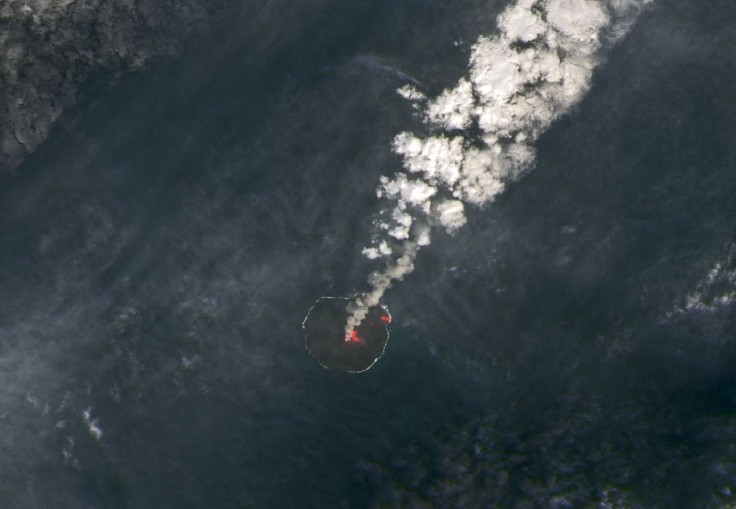NASA Satellite Image Shows Ash, Steam Coming From Japanese Volcanic Island

KEY POINTS
- Nishinoshima volcanic island in Japan has been erupting since December 2019
- A Landsat 8 image of the island shows smoke and ash coming from the volcano
- The "new" Nishinoshima was born from the fusing of two islands from 2013-2014
The Operational Land Imager on NASA and the United States Geological Survey’s (USGS) Landsat 8 satellite captured a new image of steam and ash plumes emanating from Nishinoshima volcanic island.
Evidently, a new eruption has been going on in the island since mid-December 2019 and, the Japan Coast Guard has reported continuous steam emissions rising from the central crater from Jan. 15-21. Further, other satellite-based measurements of the volcano also show that heat radiation caused by lava on the surface has been strong, while the Global Volcanism Program reported lava flows traveling to the ocean, causing steam near the coastline.
In the image taken by Landsat 8 last Jan. 26, a natural-color image of the volcano is superimposed with infrared data to show the active volcanic flow. According to the Smithsonian Institution’s Global Volcanism Program, the smoke and ash plumes recorded during this period rose up to 1,500 kilometers.

Located about 1,000 kilometers away from Tokyo, this version of Nishinoshima island is fairly new. In fact, it was only in November of 2013 when volcanic activity in the western edge of the Pacific Ring of Fire resulted in a tiny island rising up from the sea about 500 meters from the original volcanic Nishinoshima island.
Back then, the small formation was called “niijima,” which means "new island" in Japanese. At the time, scientists thought that the island would not last since similar formations near Pakistan and the Red Sea also arose, back then, but naturally sunk back below the water line as a result of erosion.

However, the small island continued to grow until it eventually fused with Nishinoshima island, forming a new, bigger island. By March of 2014, Niijima had “consumed” Nishinoshima island and the portion of the island that came from the new growth had become even larger than the original island.
“This is a great example of how volcanic islands like this in the Bonin Islands grow over hundreds to thousands of eruptions,” Volcanologist Erik Klemetti said of the event back in 2014.
Today, the island continues to be active. Since the new island was formed in 2013, it also erupted in 2015, 2017 and 2018.
© Copyright IBTimes 2025. All rights reserved.





















